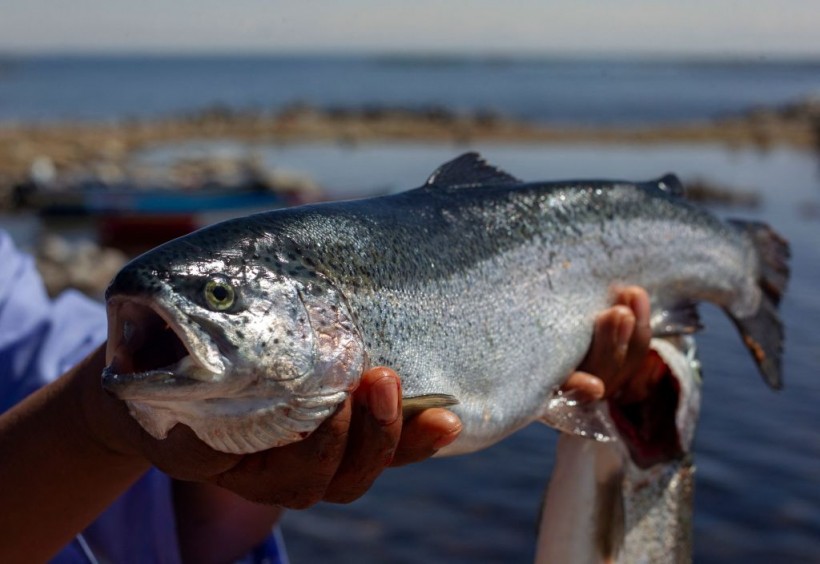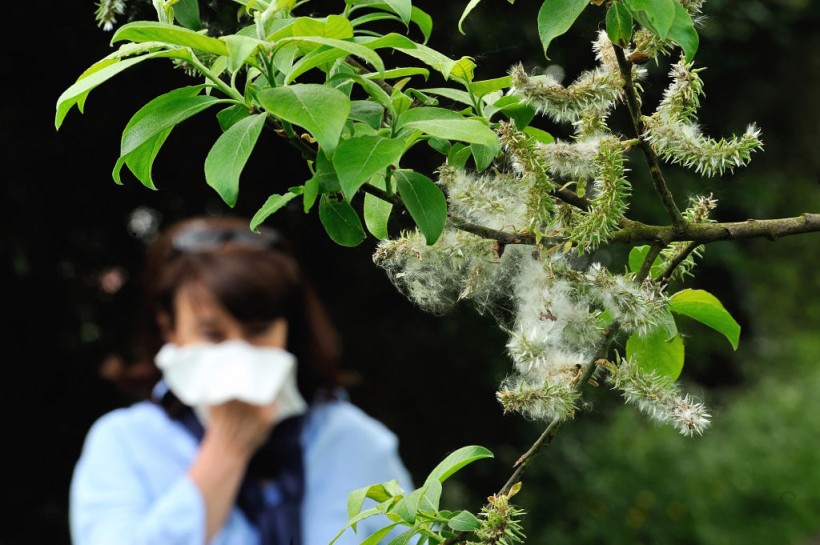[ad_1]
Trout are cold-water fish that thrive in streams and rivers with temperatures below 70°F. However, as the climate changes and the summer months get hotter, many trout habitats are becoming too warm for them to survive.
How do trout cope with this challenge? The answer is thermal refuges: cooler spots in the water that provide relief from the heat and stress.
What are thermal refuges and why are they important?

(Photo : CARLOS MAMANI/AFP via Getty Images)

(Photo : CARLOS MAMANI/AFP via Getty Images)
Thermal refuges are areas in a river or pond where the water temperature is lower than the surrounding environment. They can be created by various factors, such as groundwater springs, tributaries, deep pools, or shade from vegetation.
These are vital for trout because they offer a place to rest, breathe, and feed when the main water body is too hot.
They also help trout avoid predators and anglers, who may have a harder time finding them in these hidden spots.
According to the Ausable River Association, trout begin to be stressed when water temperatures reach the upper 60s, and they seek thermal refuge when the temperature exceeds 68°F.
If the water temperature does not improve, or if it cools down at night and heats up again the next day, the compound stress can lead to starvation, organ damage, and death.
Therefore, thermal refuges can be a matter of life and death for trout in the summer.
Also Read: How Coal and Metal Mining Affects Salmon and Trout in Northwestern North America
How can we protect and enhance thermal refuges for trout?
Thermal refuges are not only beneficial for trout, but also for the ecosystem and the economy. Trout are an important part of the food web, and they attract many recreational anglers and tourists to the Adirondacks and other regions.
However, thermal refuges are threatened by human activities, such as land development, water withdrawal, pollution, and climate change.
These factors can reduce the quantity and quality of thermal refuges, making them less accessible or effective for trout.
There are several ways that we can help conserve and improve thermal refuges for trout, such as:
- Monitoring water temperature and adjusting fishing habits accordingly. Some anglers use thermometers to check the water temperature before fishing, and avoid fishing when the temperature is above 70°F. Some rivers also have regulations that prohibit fishing in certain sections when the water temperature exceeds a certain threshold.
- Restoring riparian vegetation and stream habitat. Planting trees and shrubs along the stream banks can provide shade and lower the water temperature. It can also prevent erosion, filter runoff, and create cover and food for trout. Enhancing stream habitat with boulders, logs, and riffles can also create more thermal diversity and refuge opportunities for trout.
- Supporting conservation efforts and policies. Organizations such as the Ausable River Association, the Adirondack Council, and the Maine Department of Inland Fisheries and Wildlife are working to protect and enhance thermal refuges for trout through research, education, and advocacy. They also collaborate with landowners, anglers, and other stakeholders to implement best management practices and promote sustainable water use. Supporting these efforts and policies can help ensure the long-term survival of trout and their habitats.
Thermal refuges are a key adaptation strategy for trout in the face of rising temperatures and changing climate.
By understanding their importance and taking action to protect them, we can help trout beat the heat and enjoy the beauty and bounty of our rivers and streams.
Related article: Trout Once Believed To Be Extinct Makes A Comeback
© 2023 NatureWorldNews.com All rights reserved. Do not reproduce without permission.
[ad_2]



